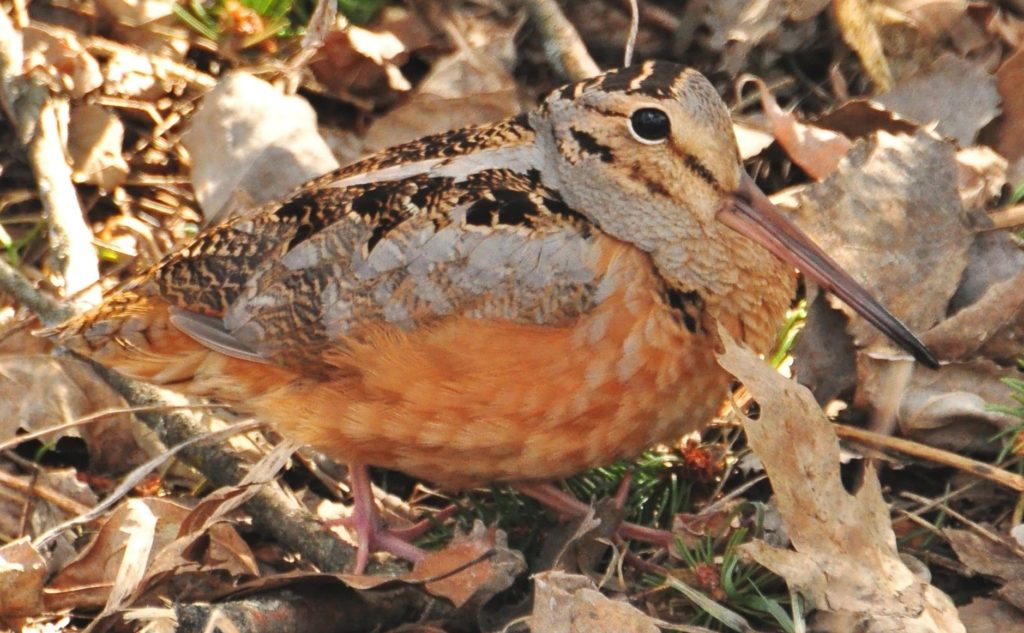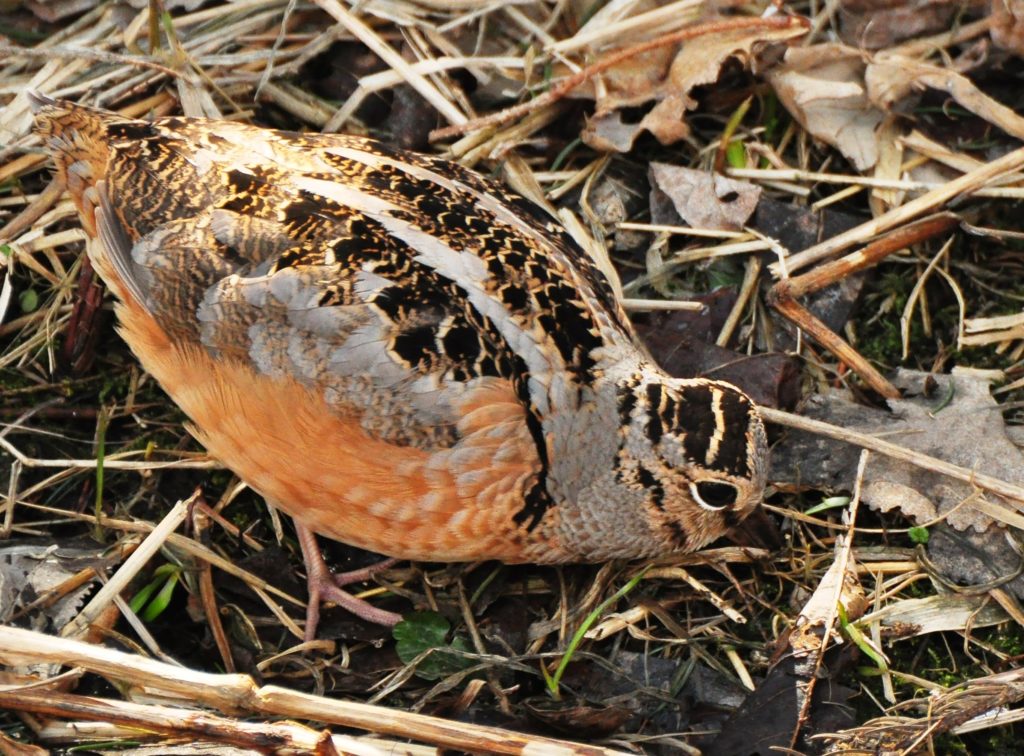Photography courtesy of Lowell Washburn, all rights reserved.

The performance begins at sunset. As the evening sky explodes into a dazzling array of color; a long-billed, oddly-shaped, quail-sized bird rises from the forest floor. Spiraling ever higher, the creature soon becomes a speck, hovering more than 300 hundred feet above its woodland home. With the flight now at its zenith, the bird suddenly folds its wings and begins a meteor-like descent; hurtling to earth in a breathtaking series of zigzaging maneuvers. Dropping through the treetops, the bird’s speed remains unchecked. An inevitable high-speed collision and certain death is but a heartbeat away. Finally, and at a mere split second before impact, the creature extends its wings and gently flutters to the sod with a perfect two-point landing. Dropping its wings to the ground and fanning its stubby tail, the bird struts across the forest floor like some kind of miniature gobbler.

There is no question that the courtship antics of the American woodcock – also known as Timberdoodle — is one of the Iowa woodland’s most amazing spring rituals. The prelude to these one of a kind, twilight performances actually begins on the ground as males emit a series of off key, nasal “peentings” — the woodcock’s version of spring bird song. Once the show takes to the air, peenting is replaced by a musical twittering produced by specialized wing feathers. The dazzling return to earth is followed by resumed peenting and more spiraling flights as males attempt to attract the attention of prospective mates.
Although woodcock migrate through Iowa each spring and a handful stay to nest, most residents will never catch so much as a single glimpse of one. Bedecked in elegantly camouflaged plumage, woodcock are nearly impossible to detect. Feeding almost exclusively on earth worms, the birds travel by night and spend their days probing the moist forest soils with their ridiculously long bills.

Woodcock have delicately shaped pink feet equipped with long slender toes. Biologists have theorized that foraging birds utilize these specialized appendages to detect the slightest underground movements of their prey. After observing the behavior of a woodcock feeding near the edge of a small woodland stream, I quickly became a firm believer in this theory.
Slowly and deliberately tiptoeing across the damp turf, the Timberdoodle would balance on its front foot while steadily rocking back and forth. Whenever an underground movement was detected, the woodcock would instantly come to a halt. Assuming a statue-like pose, the bird indeed appeared to be ‘listening with its feet’. Convinced of what it was “hearing”, the bird would suddenly plunge its bill into the soil and extract a wriggling ‘crawler which it promptly swallowed in one long gulp. A dozen probes produced a total of eleven earthworms. Even if the bird had been standing on the top of a recently filled bait box, this would seem to be a suspiciously high rate of success if the probings were simply random attempts. LW


 Tom Cope
Tom Cope Sue Wilkinson
Sue Wilkinson Susan Judkins Josten
Susan Judkins Josten Rudi Roeslein
Rudi Roeslein Elyssa McFarland
Elyssa McFarland Mark Langgin
Mark Langgin Adam Janke
Adam Janke Joe Henry
Joe Henry Kristin Ashenbrenner
Kristin Ashenbrenner Joe Wilkinson
Joe Wilkinson Dr. Tammy Mildenstein
Dr. Tammy Mildenstein Sean McMahon
Sean McMahon